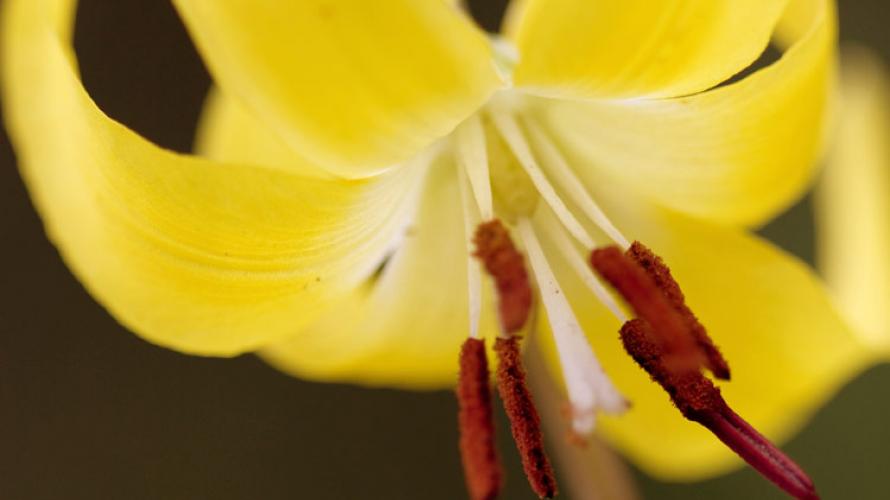
 Jenna Caplette migrated from California to Montana in the early 1970s, first living on the Crow Indian reservation, then moving to Bozeman where she owned a downtown retail anchor for eighteen years. These days she owns Bozeman BodyTalk & Energetic Healthcare, hosts a monthly movie night, teaches and writes about many topics.
Jenna Caplette migrated from California to Montana in the early 1970s, first living on the Crow Indian reservation, then moving to Bozeman where she owned a downtown retail anchor for eighteen years. These days she owns Bozeman BodyTalk & Energetic Healthcare, hosts a monthly movie night, teaches and writes about many topics.
*********
As spring greens, delicate close-to-the ground flowers emerge. Phlox, Spring Beauties and Yellow Bells are too tiny to fully appreciate while standing. Try taking a photograph of one of these flowers with a regular lens and you’ll document indistinct colorful somethings.
Macro, or close-up, photography is for that world at your feet, the world of pygmy flowers and busy-bugs. It makes sense that the closer you focus on whatever it is you want to document, the larger it will appear. True macro lenses have a magnification of at least one-half life size. That means that the subject of your intended photo will reproduce at one-half its size when recorded by your film or digital camera.
You can use this ability in a quite literal sense, to render a concise image of a whole-petaled flower, or you can move in and let a stamen stand for the rest. Photographs like these illustrate science-based books and articles. For an artistic approach, focus instead on expressing an explosion of complementary or contrasting color.
While you’re crawling around looking at bugs, mushrooms, or some other tiny thing of interest, your working distance can be one and a half feet from what you’re shooting, or as close as two to four inches. Most photographers own a 70-200mm or 75-300mm zoom lens. These will work in taking close-up photos, but a true macro lens in the 60mm to 105mm range is preferable. All of the major camera and lens manufacturers make macro lenses that work with both film and digital bodies. If you’d rather invest in a zoom lens, many are available with a close-focusing feature.
Use a tripod. A convertible one allows you to adjust each leg separately, a handy feature when you're working on uneven ground. Look for a tripod with a reversible center column, so you can mount the camera below the tripod legs where you can get it close-enough to your intended subject. Don’t forget your cable-release either!
Lighting is key in any type of photography. The best natural light can be that of early morning, evening, or overcast days. At any breeze-free time of day, to get good lighting on your subject, first be aware of where your own shadow falls. With a digital camera, the built-in flash may help. Since lighting becomes even more important with close-up work, other lighting aides can be useful. Silver and gold-tinted reflectors are metal hoops covered with nylon that catch and re-direct natural light to fill shadows. Colored reflectors change the tone of natural light. Place a diffuser in the sun-path, and it will diffuse or soften the light. Warming, soft-focus, and center-spot filters can also be useful.
Before you click the shutter, be sure there are no objects in the back or foreground of the picture that will compete for attention with your intended subject. Things that look out of focus, or mostly-invisible in your view-finder may be quite apparent in the actual photograph. The reason for that has to do with depth of field and aperture settings. If your camera has a step-down feature use it to see what will and won’t be sharply in focus.
What you'll discover is that the essential skill in macro-photography is patience. Patience while you wait for a playful breeze to pass. Patience in either finding or creating the perfect lighting conditions. Patience with checking details of setting and focus.
You move and work at an entirely different pace when you explore the world at your feet. To master macro-photography you have to slow down, settle down and focus your attention. With the hectic forward-scramble of today’s world, that’s a very good thing. Exactly when were you last eye-to-petal with a Shooting Star or Glacier Lilly? Get your knees dirty, explore and enjoy.
This tip was written with the expert assistance of the staff at F-11 Photographic Supplies in Bozeman.
